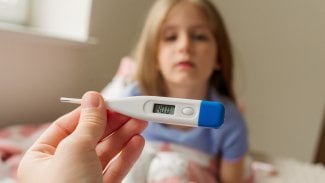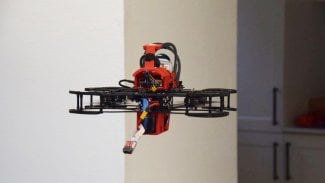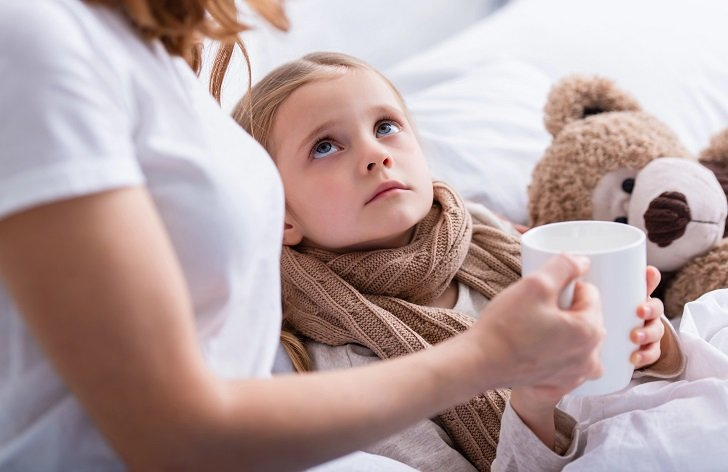Názory k článku Mediální příušnice a jejich nemediální realita
-
Článek je starý, nové názory již nelze přidávat.
-
Marty (neregistrovaný)
Nedávno jsem seděl u lékaře, kde má doktor pořádník, kam se člověk zapíše a má tam i důvod. Slečna přede mnou napsala priusnice a plná cekarna lidí (počkal jsem raději venku). Nicméně je mi 34 a priusnice jsem prodělal, jako snad všichni v mém věku... tzn. opět nemohu počítat s tím, že jsem rizikovější, ba naopak.
-
tin (neregistrovaný)
Je zaujimave, ze jednotlive hygienicke stanice neposielaju rovnake data; lutujem zamestnancov ECDC, ktori ich spracuvaju do europskych statistik.
Podla ECDC bolo v r. 2014 v CR hlasenych 677 mumpsu/priusnic; z toho 81.39% chorych malo 2 ockovacie davky, 1.62% malo jednu davku; 1.48% malo neznamy pocet vakcin, 14.03% nebolo ockovanych. Rozdelenie podla veku: 4.14% vo veku od 1-4 r., 19,94% vek 5-9 r., 23,34% 10-14 r., 27,18% 15-19 r., 14,62% 20-29 r., 10,64% od 30 r. vyssie. -
tin (neregistrovaný)
Dakujem za kontrolu, mate pravdu, moja chyba. Neurobila som kontrolny sucet. Data su:
Ockovani 2x - 81.39
Neockovani - 14.03
Ockovani 1x - 1,62
Neznamy pocet ockovacich davok - 1,48
Neznamy status - 1,48Kontrola suctu - 100
Prosim, mozete si to overit http://atlas.ecdc.europa.eu/public/index.aspx?Instance=GeneralAtlas
-
tsd (neregistrovaný)
To vám přece již vysvětlil autor, který tvrdí (a zcela správně), že při neočkování budeme mít téměř 100% nemocnost. Čím víc neočkovaných tím víc nemocných. A kdo neočkuje? Odmítači! Logické ne? :-))
tsd
P.S. Autor ovšem pozapomněl připomenout, že i u nejmenších dětí se vyskytují vážné komplikace. Při nynějším ročním výskytu asi 1000 případů onemocnění /rok máme x_vážných komplikací u dětí. Při ročním výskytu nemoci při neočkování 100 000 / rok ( počet narozených ročně) se nám zvýší počet vážných komplikací o dva řády.A vše se přesune do kategorie těch nejmenších, kde jsou komplikace také a hodně závažné.. To vše za předpokladu, že se neočkuje a každý si v dětství nemoc prodělá, jak doporučuje autor. "Krásná" budoucnost dle Vavrečky. -
skeptik (neregistrovaný)
Aktuálně jsou u nás nejvíce nemocní očkovaní v absolutních i relativních číslech. Lidé narození před rokem 1987 (neočkovaní) příušnice s vysokou pravděpodobností už prodělali v dětství a neonemocní znovu. Nejvíce nemocných je u očkovaných narozených po roce 1987, ostatně je to i napsáno v článku.
Na tom by nebylo nic znepokojivého ani zvláštího, horší je, že očkování posouvá propuknutí nemoci až do vyššího věku, kdy mají příušnice horší průběh s velkým rizikem trvalých následků. Uvádí se, že příušnice prodělané v pubertě nebo v dospělosti způsobují u 13% mužů snížení plodnosti nebo úplnou neplodnost.
-
tsd (neregistrovaný)
Vy tvrdíte, že:
"....horší je, že očkování posouvá propuknutí nemoci až do vyššího věku, kdy mají příušnice horší průběh s velkým rizikem trvalých následků...."
Autor v článku tvrdí to samé, ale v posledním příspěvku diskuze tvrdí známý avšak v článku zatím utajovaný fakt, že údajně většina nemocí u očkovaných probíhá subklinicky. Já jen dodávám a upřesňuji, že jen u těch, kterým poklesl ve vyšším věku titr protilátek pod protektivní úroveň. Autor toto samozřejmě použil účelově, aby se dopočítal velké incidence po očkování. Ale tím zase rozcupoval svůj vlastní argument o nebezpečném prodělání nemoci v dospělosti. Nebezpečné a s trvalými následky je to hlavně pro neočkované, kteří se s nemocí poprvé setkají až v dospělosti. Očkovaní to většinou prodělají be větších problémů až bezpříznakově.
tsd -
skeptik (neregistrovaný)
Očkování pravděpodobnost komplikací snižuje, ale subklinický ani mírný průběh nemoci to ani náhodou není: http://www.ncbi.nlm.nih.gov/pmc/articles/PMC4514179/
Hospitalizovaných bylo 21% neočkovaných, 12% očkovaných jednou dávkou a 10% očkovanýcn dvěma dávkami.
Zánět varlat (starších 12 let): 7.7% neočkovaných, 3.6% očkovaných jednou dávkou a 1.6% očkovaných dvěma dávkami.
Meningitida 0.8% neočkovaných, 0.2% očkovaných jednou dávkou a 0.5% očkovaných dvěma dávkami.
A ještě než se začnete blahem rozplývat, jak to očkování krásně funguje, nezapomeňte, že to není zadarmo: http://www.cochrane.org/CD004407/ARI_using-the-combined-vaccine-for-protection-of-children-against-measles-mumps-and-rubella
The highest risk of association with aseptic meningitis was observed within the third week after immunisation with Urabe-containing MMR (risk ratio (RR) 14.28; 95% confidence interval (CI) from 7.93 to 25.71) and within the third (RR 22.5; 95% CI 11.8 to 42.9) or fifth (RR 15.6; 95% CI 10.3 to 24.2) weeks after immunisation with the vaccine prepared with the Leningrad-Zagreb strain. A significant risk of association with febrile seizures and MMR exposure during the two previous weeks (RR 1.10; 95% CI 1.05 to 1.15) was assessed in one large person-time cohort study involving 537,171 children aged between three months and five year of age. Increased risk of febrile seizure has also been observed in children aged between 12 to 23 months (relative incidence (RI) 4.09; 95% CI 3.1 to 5.33) and children aged 12 to 35 months (RI 5.68; 95% CI 2.31 to 13.97) within six to 11 days after exposure to MMR vaccine. An increased risk of thrombocytopenic purpura within six weeks after MMR immunisation in children aged 12 to 23 months was assessed in one case-control study (RR 6.3; 95% CI 1.3 to 30.1) and in one small self controlled case series (incidence rate ratio (IRR) 5.38; 95% CI 2.72 to 10.62). Increased risk of thrombocytopenic purpura within six weeks after MMR exposure was also assessed in one other case-control study involving 2311 children and adolescents between one month and 18 years (odds ratio (OR) 2.4; 95% CI 1.2 to 4.7). Exposure to the MMR vaccine was unlikely to be associated with autism, asthma, leukaemia, hay fever, type 1 diabetes, gait disturbance, Crohn's disease, demyelinating diseases, bacterial or viral infections.
-
tsd (neregistrovaný)
Pro přátele českého jazyka závěrečné shrnutí vašeho příspěvku:
... MMR vakcíny, jsou spojeny s autismem, astmatem, leukémií, sennou rýmou, diabetem typu 1, poruchami chůze, Crohnovou nemocí, demyelinizačním onemocněním, bakteriálními nebo virovými infekcemi....
To je tak silný kafe, že kdyby to byla pravda, tak lidstvo už dávno vyhynulo na MMR vakcíny. To jako fakt máme brát vážně? Si děláte srandu, vždyť už první bod o autismu byl dávno vyvrácen.
tsd -
tin (neregistrovaný)
Tak toto vase vysvetlenie som nepochopila.
Tipujem (len tipujem), ze narazete (pri tvrdeni, ze na Slovensku je viac odmietacov) na to, ze je v porovnani s CR vacsi pocet tych, ktori maju 1 ockovanie.
V CR mali 2 davky 81.39% v SR 43.1%
V CR malo 1 davku 1,62% v SR 43.46%
neockovanych bolo v CR 14.03% v SR 13.53% (ten zvysok % v Cr nie je dolezity v tomto pripade).
Ten rozdiel (medzi %) zaockovanych 1 a 2. davkami CR vs SR je dany rozdielnostou ockovacich kalendarov; v CR je prva davka okolo 15. mesiaca, v SR to iste (medzi 15-18.mesiacom), ale v CR nasleduje druha davka okolo 2 rokov a v SR v 11. roku!
Neviem do akej miery ste zistovali kmen mumpsu/priusnic, ktory je v CR. V SR je potvrdeny kmen G. Problem s ucinnostou vakciny je okrem ineho aj v tom, ze obsahuje kmen A a ten ma zjavne mensi ucinok (ked je sucastou vakcinu) ako prirodzene prekonanie ochorenia. Na Slovensku sa k tomu vyjadrila imunologicka MUDr. Tkacova, ktora vysvetlovala v spravach, preco sa epidemia vyhla starsim neockovanym generaciam: "vdaka kontaku s ochorenim v detstve si vytvorili trvalu prirodzenu imunitu, ktora je silnejsia ako vakcinacna." -
tsd (neregistrovaný)
Trvám na svém. Je mi líto, že to nechápete. Vaše argumenty naopak nechápu já. Vím odkud to papouškujete: http://www.rizikaockovania.sk/dok/dieta/veda_2014_04.pdf
tsd -
tin (neregistrovaný)
Ale fuj, aky skaredy vyraz papuskovat!
Vyjadrenie imunologicky o ucinnosti prirodzeneho prekonania ochorenia vs. ochrany ockovanim som si pamatala, len som si pozrela presnu citaciu.
Druha vec; vy ste svoje tvrdenie o odmietani ockovania postavili zjavne na pocte pripadov mumpsu (bavime sa stale o cislach za r. 2014), kde v SR ich bolo viac ako v CR.
No a? Statistiky potom ukazali ako to bolo s rozdelenim pripadov podla ockovacieho status, kde dokonca CR ma o cca pol percenta viac pripadov neockovanych ako ockovanych.
A napisala som tiez to, ako je to s ockovacim kalendarom v SR.
Mam na zaklade tohto udaju (viac pripadov mumpsu u neockovanych v CR ako v SR) tvrdit, ze v CR je viac odmietacov ako v SR? -
Autor (neregistrovaný)
Děkuji,
jsou v těch Vašich vstupech zajímavé informace z SK, které jsem neznal. Např. dosud nikdy jsem se nezabýval otázkou jak "autority" v SK odůvodňují druhou dávku MMR až v 11 letech. Možná právě proto ta odůvodnění na národní úrovni nikdy neexistují v písemné podobě. Stačilo by je postavit proti sobě a jedno ubít druhým a naopak.
-
tsd (neregistrovaný)
Ale určitě existují v písemné podobě, jen nikdo neměl potřebu to Vavrečkovi posílat poštou.
Existují něco jako serologické přehledy ze kterých se vychází při určení termínu druhé dávky. To jste nevěděl? Krom toho si pozorně přečtěte příbalák, ať se tolik nedivíte, že je to v každé zemi jinak. Vy jste ho nečetl?
tsd -
tin (neregistrovaný)
Pouvazujem nad tym, troche sa pohrabat v zapisoch zo zasadnuti prislusnych komisii.
Len neviem, ci to nedopadne tak, ako ziadost o zaslanie farmakoekonomickej analyzy ockovania proti pneumokokom na Slovensku, ktoru vypracovala spoločnost Fourth Hurdle Consulting Limited, a na zaklade ktorej doslo k zaradeniu ockovania proti pneumokokom medzi povinne. Odpoved k ziadosti bola nasledovna: "Vzhľadom na to, že Farmakoekonomickú analýzu očkovania proti pneumokokom na Slovensku vypracovala pre spoločnosť PFIZER LUXEMBOURG SARL, o.z. spoločnosť Fourth Hurdle Consulting Limited, Ministerstvo zdravotníctva SR požiadalo spoločnosť PFIZER LUXEMBOURG SARL, o.z., so sídlom Pribinova 25, 81109 Bratislava o udelenie súhlasu so sprístupnením (zverejnením) tohto dokumentu (§ 11 ods. 1 písm. c) Zákona č. 211/2000 Z.z. o slobodnom prístupe k informáciám). Vzhľadom na to, že Farmakoekonomická analýza očkovania proti pneumokokom na Slovensku obsahuje údaje a ďalšie skutočnosti, ktoré sú duševným vlastníctvom a obchodným tajomstvom spoločnosti PFIZER LUXEMBOURG SARL, o.z., a ktorých ochranu v tejto súvislosti spoločnosť zabezpečuje, presadzuje a ďalej požaduje, PFIZER LUXEMBOURG SARL, o.z., so sídlom Pribinova 25, 81109 Bratislava, vyjadrila svoj nesúhlas so sprístupnením (zverejnením) požadovaného dokumentu." -
Autor (neregistrovaný)
Tohle je strašně zajímavé, už jsem o tom případu slyšel. Tohle by totiž mělo být určitě vynutitelné soudní cestou. Nenašel by se u vás člověk, co by do toho šel? (I bez advokáta). tedy podat žalobu na stát o vydání této informace. Myslím, že bychom s kolegy rádi pomohli sepsat takovou žalobu. Jsou mnohé případy kdy v soudních sporech tyto dokumenty "musely vypadnout ven".
-
tin (neregistrovaný)
V absolutnych cislach je to tazke vyjadrit; napr. priadov mumpsu nad 30 rokov je 77 (r. 2014 - 1559 celkovo), tito ockovani neboli (zacalo sa ockovat v r. 1987) a pravdepodobne mumps v detstve neprekonali. Zvysok su pripady do 30 rokov, ktori teoreticki mali byt ockovani, s vynimkou deti do 15/resp. 18. mesiacu zivota. Z nich je bez davky 211 (po zaokruhleni), rozdiel 211-77 je 134. Takze toto by mali byt ti, ktori odmietli ockovanie a nemohli byt ockovani pre vek. Tabulka vsak neobsahuje kolonku (resp. graf neobsahuje cast), ktora hovori o tych, ktori neboli ockovani pre kontraindikacie. A to sa da docitat v spravach jednotlivych RUVZ/po cesky je ekvivalent hygienicke stanice.
Nech sa paci, tu su udaje za r. 2014, ani tie nie su uplne, sucty jednotlivych pripadov nedavaju celkove cislo: "Z celkového počtu chorých bolo riadne očkovaných 959 osôb, 16 x neočkovaných pre vek, 151 neočkovaných, pričom 39x sa jednalo o deti do 15 rokov veku vrátane, 31x do 25 rokov veku vrátane a 81 x o osoby nad 25 rokov veku. U týchto nie je údaj o očkovaní dostupný,
nie je jasné, či sa nedal zistiť, alebo sa jednalo o kontraindikácie či odmietnutia." http://www.epis.sk/InformacnaCast/Publikacie/VyrocneSpravy/Files/VS_SR_2014.aspx -
tsd (neregistrovaný)
Autor nám zapomněl připomenout, jak to , že dalších cca přes 100 000 ročně narozených a v drtivé většině řádně očkovaných dětí neonemocní?
Nebude to třeba tím, že vakcína u těch 100 tis. zafungovala a u necelých dvou tisícovek (o kterých se v článku píše) možná selhala, nebo třeba ti deklarovaní očkovaní byli očkováni jen na papíře za tiché podpory známého pediatra? Ať počítám jak počítám, tak mi to vychází přes 80% účinnosti očkování. Opírám se o jeden z mála správných názorů autora, že příušnice jsou natolik infekční, že bez vakcinace by onemocnělo skoro 100% populace.
Všechna ostatní eskamotérská matematická cvičení jsou jen odvádění pozornosti od faktu, že pan autor vůbec nepočítá s drtivou většinou očkovaných a chráněných osob, ale že se zabývá jen rozborem těch nemocných, kterých je ovšem pouhé minimum a to jen díky očkování.
tsd -
Autor (neregistrovaný)
Dle reportáže ČT v některých krajích dosáhla incidence příušnic stavu před očkováním (před rokem 1987). Někdy mám z Vašich vyjádření pocit, že rychleji píšete než domýšlíte, co jste vlastně napsal. Ale rozebírat to nebudu. Dnes je to jedna logická chyba vedle druhé. Dejte si kafe.
-
tsd (neregistrovaný)
Chytil jste se na špek kolego. Následuje ukázka vaší mediální masáže.
"Kdybych vám nabídl: A) neočkování proti příušnicím s tím rizikem, že příušnice na 100 % proděláte, avšak do pěti let svého věku, nebo B) očkování proti příušnicím s tím, že příušnice na 20 % proděláte, avšak až po patnáctém roku svého věku, co byste pro sebe nebo své dítě z těchto dvou možností zvolili?"Tak proč teď mluvíte o nějaké incidenci, když tvrdíte, že máme 100% jistotu, že každý by prodělal do pěti let věku onemocnění.
Neodporujete si tak trochu? Já vím, že odporujete, jen jsem chtěl dokázat, jakými nesmysly nás krmíte. Přeci jenom něco o incidenci vím a je mi jasné, že populace by těžko celá onemocněla, ale když používáte takové podpásovky tak jsem si dovolil vím hodit udičku.
Netušil jsem, že se tak lehce chytnete.
Dejte si panáka nebo raději celou flašku ať to udýcháte.
tsd -
tsd (neregistrovaný)
Ze zoufalství zase mlžíte. Jaká byla incidence před očkováním ukazuje graf č. 10. Jestli v nějakém kraji někdy proběhla lokální epidemie, může se stát, že v tom roce opravdu incidence překročila průměr let minulých před očkováním. Jak je to doopravdy (bez vašeho obelhávání) nechť si přečte laskavý čtenář sám.
http://docplayer.cz/3381487-Odmitani-ockovani-v-kraji-vysocina-v-obdobi-let-2010-2013.htmltsd
-
tsd (neregistrovaný)
Při letmém pohledu mi za předchozí léta (před érou očkování) vychází incidence v průměru cca 500/100tis.
To je pro představu 50 000 nemocných ročně na 10 mil. ( tj. nynější ČR) . Nyní je výskyt cca 1000-2000 ročně. Podle JV úplně zanedbatelný rozdíl. To nemluvím o tom, že se o nynější epidemie velkou měrou zasloužili odmítači.
tsd -
Autor (neregistrovaný)
Bavíme se (i v reportáží ČT) o tomto roce 2016. Letos by mohla být roční celková incidence příušnic v ČR nikoliv 1-2 tisíce ročně, ale až kolem 8 000 a lokálně (v určitých regionech) se skutečně může již poprvé přiblížit až té incidenci 500/100 tis. Tohle mi v té reportáži ČT přišlo uvěřitelné.
Dále poté neuvažujete, že se v důsledku očkování velmi změnil poměr subklinických a klinických průběhů příušnic v populaci. A to je přece velmi důležitá informace pro mnohé závěry. V článku jsem ji neuvedl jen proto, že už by se to opravdu strašně natáhlo.
V současné proočkované populaci prodělává více osob příušnice subklinicky než tomu bylo dříve. Takže srovnávat období před rokem 1987 a nyní jen na základě incidence klinicky vyjádřených příušnic je opravdu postavené na vodě.
A nyní se již s dovolením směrem k Vašim příspěvkům opět odmlčím. Tato informace měla totiž ještě smysl pro jiné čtenáře této diskuse a patří k obsahu článku, kam se mi nevešla..
-
tsd (neregistrovaný)
ANO vy jste jaksi opět opomenul zdůraznit fakt, že u očkovaných kterým vyvanula imunita bývá průběh onemocnění lehký až subklinický. Tak proč vyhrožujete vážnými následky v dospělosti. Neodporujete si zase? Ano odporujete. Vaše podivné teorie mají tolik trhlin, že se divím, kde berete odvahu je vůbec prezentovat.
Máme tady letos nadprůměrný epidemický výskyt. V éře před očkováním se pravidelně v odstupu několika let objevovaly epidemie s nemocností 1000/100 000. Vy srovnáváte výjimečný rok s průměrem. Když porovnáme výjimečný rok před érou očkování s letošním výjimečným rokem vychází to 8.000 / 100.000 nemocných.
Takže opět vaše ekvilibristika s čísly. (výsledek správný, ale vstupní data úmyslně špatně vybraná)
tsd
Dále u nás najdete
Najdete na Vitalia.cz
- BMI kalkulačka
- Příznaky cukrovky
- Bolest zad
- Rýmovník
- BMI kalkulačka pro ženy
- Příznaky sklerózy
- Bolest břicha
- Kotvičník
- BMI kalkulačka pro muže
- Příznaky zápalu plic
- Bolest v krku
- Heřmánek
- Těhotenská kalkulačka
- Příznaky chřipky
- Bolest v podbřišku
- Rozmarýn
- Ovulační kalkulačka
- Příznaky angíny
- Bolest hlavy
- Jitrocel



















